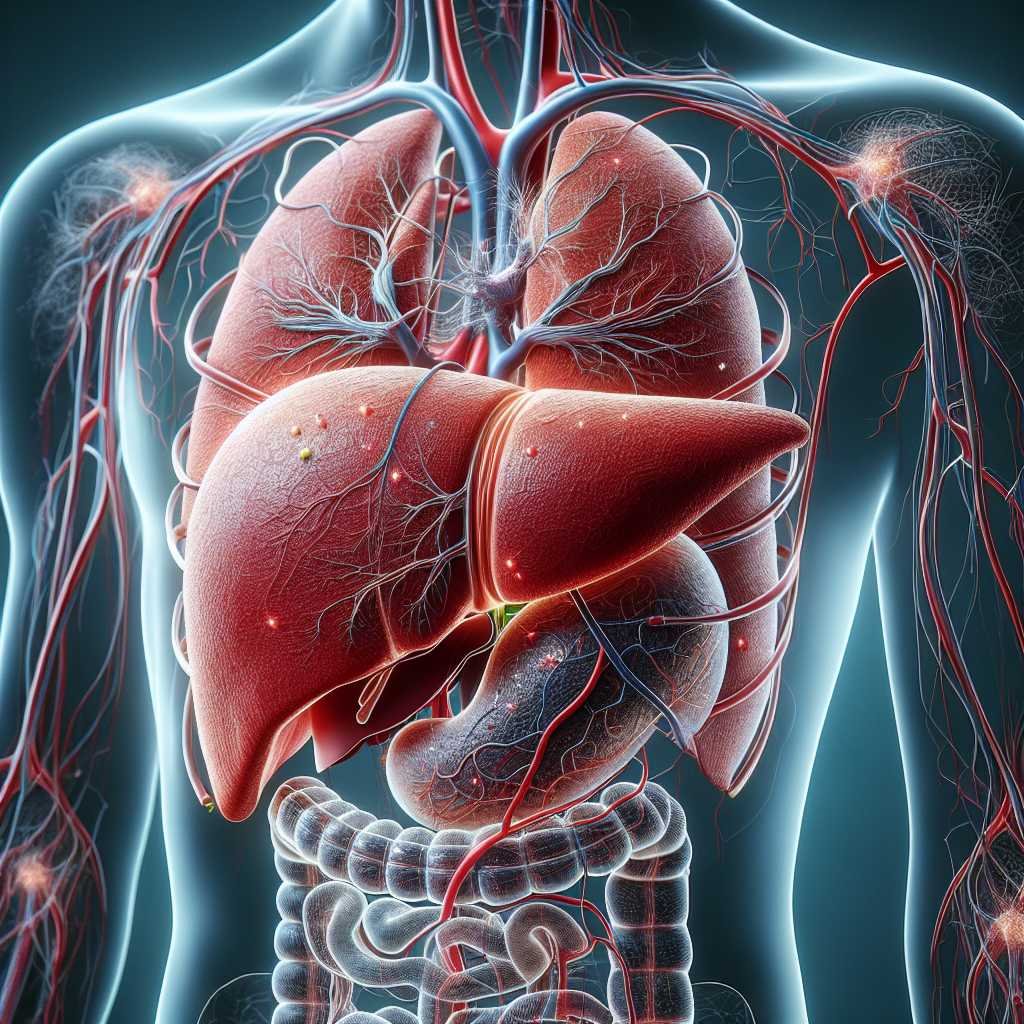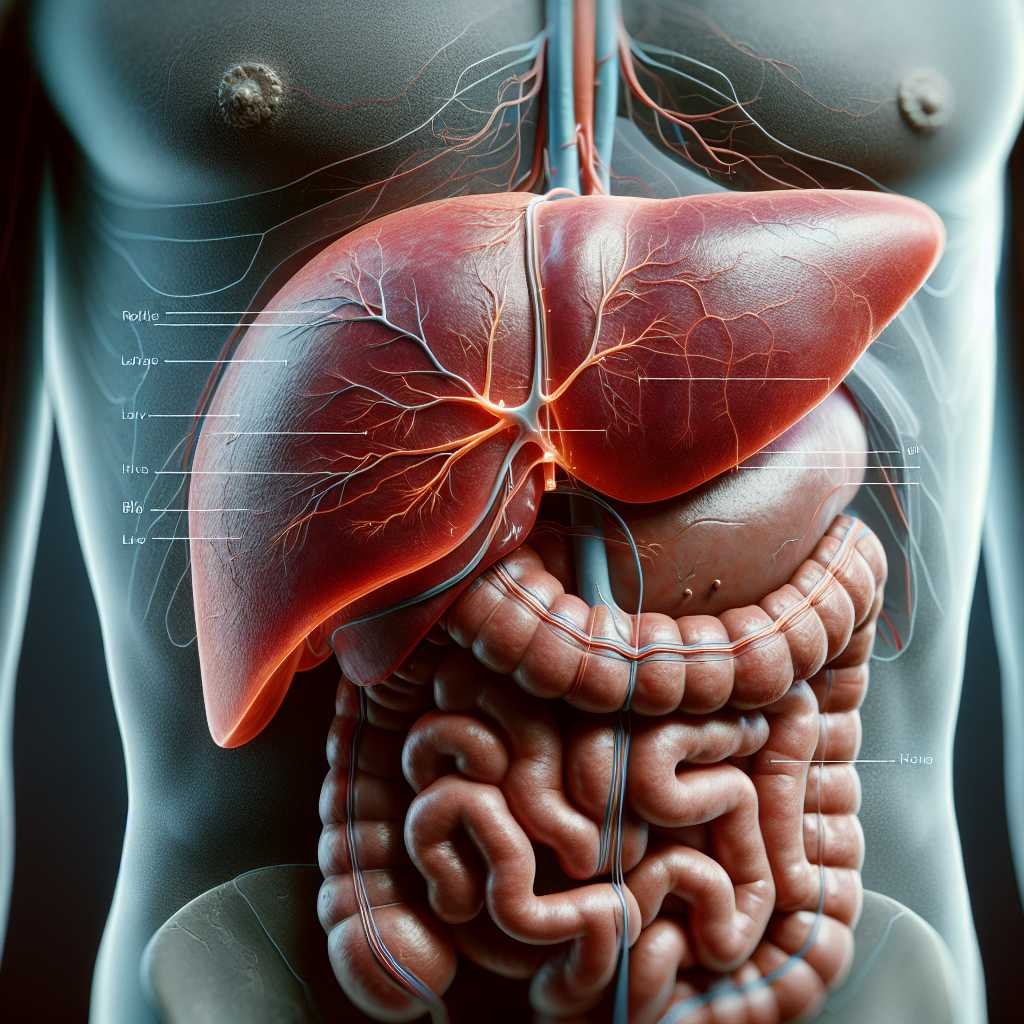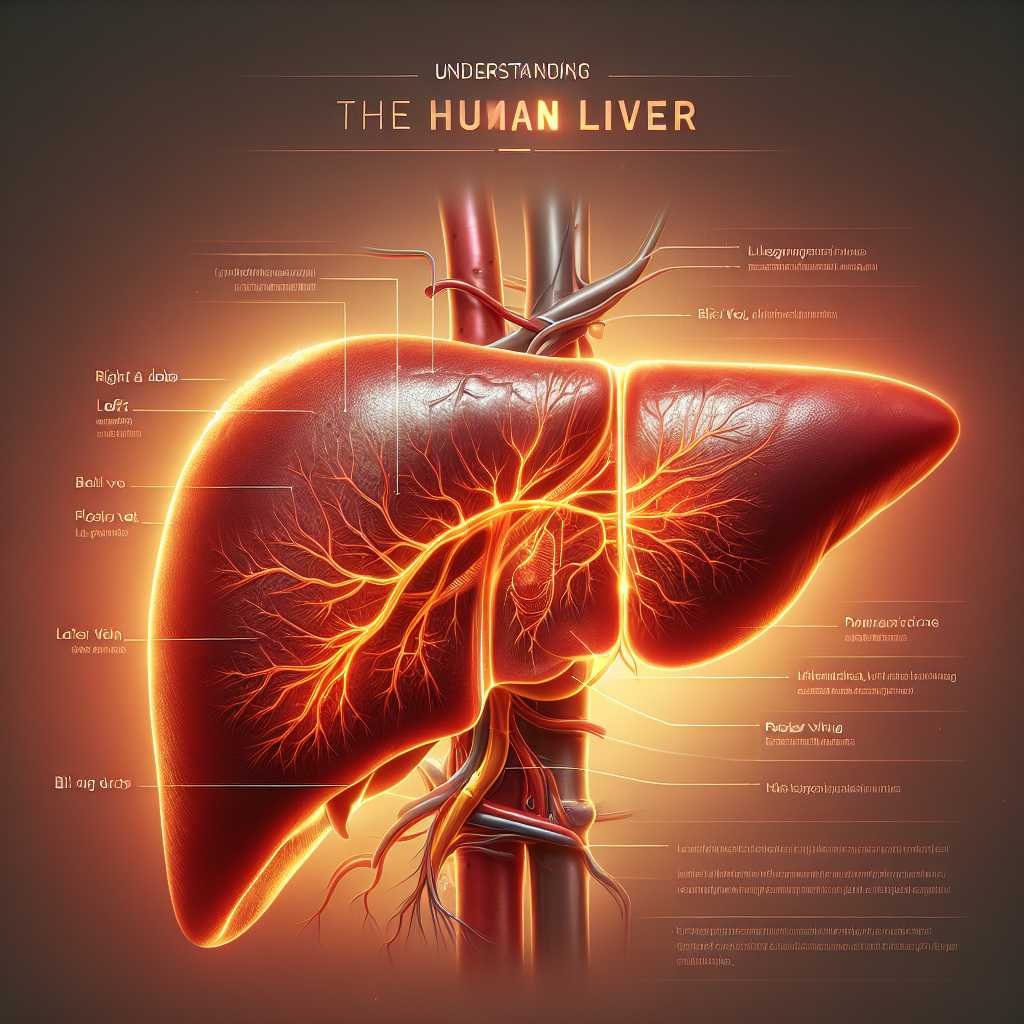The Essential Functions and Structure of the Liver
Introduction
The liver, the largest internal organ in the human body, plays a crucial role in maintaining overall health. Weighing between 3 and 5 pounds, it is situated on the right side of the upper body, beneath the lungs, and occupies a significant portion of the rib cage. The gallbladder, which stores bile produced by the liver, is located just beneath it. The liver consists of two main lobes: the larger right lobe and the smaller left lobe, separated by connective tissue that helps anchor the organ in place.

The Liver’s Primary Function
The liver’s most vital function is to filter blood continuously. Its deep reddish-brown color is a result of its high blood content, with approximately a pint of blood, or 13% of the body’s total blood supply, residing in the liver at any given time. Remarkably, the liver filters over a liter of blood every minute, equating to around 22 gallons per hour and more than 250 gallons in a single day.
Two main blood vessels supply the liver: the hepatic artery and the hepatic portal vein. The hepatic artery delivers oxygen-rich blood, while the hepatic portal vein carries nutrient-laden blood from the digestive system, which may also contain medications or toxins.
Structure of the Liver
As previously mentioned, the liver is divided into two lobes, each composed of smaller units known as lobules, which are clusters of liver cells. The hepatic artery and portal vein enter the liver, branching into smaller vessels that create a network supplying blood to each lobule. After the liver cells process the blood, bile is transported through small ducts, while the filtered blood drains into veins located at the center of each lobule. These veins converge into larger veins, ultimately leading to the hepatic veins, which carry blood away from the liver through the inferior vena cava, the body’s largest vein.
Bile is transported out of the lobules via ducts that merge into the right and left hepatic ducts. These larger ducts unite to form the common hepatic duct, which drains bile into the gallbladder for storage and delivers it to the small intestine’s initial segment when needed.

The Liver’s Multifaceted Role
Unlike the heart or lungs, the liver’s activities are not felt by the individual, leading many to overlook its importance until issues arise. This remarkable organ is responsible for over 500 essential functions, second only to the brain in complexity. Many of these functions are metabolic, enabling the conversion of food into energy, breaking down food into essential building blocks, and eliminating waste products.
Detoxification and Waste Removal
One of the liver’s critical roles is detoxification, where it removes harmful substances from the body by breaking them down into smaller byproducts. These byproducts exit the liver either through bile or blood. Bile byproducts are expelled from the body via feces, while those in the bloodstream are filtered by the kidneys and eliminated through urine.
Conclusion
The liver is an extraordinary organ that performs a multitude of functions essential for maintaining health. Understanding its structure and roles can help individuals appreciate its importance and encourage proactive measures to support liver health.

